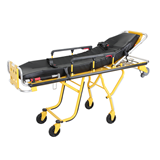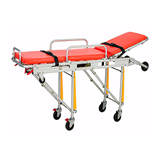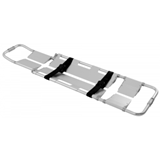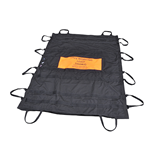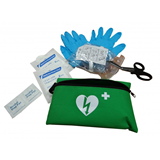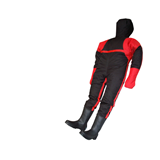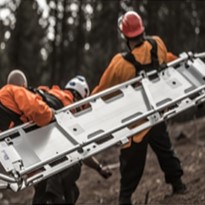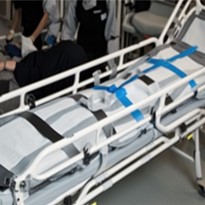In the realm of emergency response and search-and-rescue operations, the rescue stretcher stands as an indispensable tool, playing a pivotal role in the safe extraction and transportation of injured individuals from challenging environments. This article delves into the collaborative efforts that drive advancements in rescue stretcher systems, underlining their paramount significance in ensuring the effectiveness and safety of rescue operations.
I. Collaboration Between Manufacturers and Rescue Organizations
A. The Significance of Collaboration in Improving Rescue Stretcher Systems
Collaboration between manufacturers of rescue stretchers and the organizations and personnel tasked with utilizing them is crucial. It enables a symbiotic relationship where insights from the field inform design improvements, resulting in more efficient and effective stretcher systems.
B. Examples of Successful Partnerships Between Manufacturers and Rescue Organizations
Several notable partnerships have demonstrated the success of manufacturer-rescue organization collaborations. These partnerships have led to the development of stretcher systems that are tailored to the specific needs and challenges faced by rescue teams.
C. Key Benefits of Manufacturer-Rescue Organization Collaborations
When manufacturers and rescue organizations join forces, they bring unique expertise to the table. Manufacturers offer technical prowess, while rescue organizations contribute practical field experience. The synergy between these two entities yields benefits such as enhanced usability, increased safety, and improved overall performance of rescue stretchers.
D. Potential Challenges and How They Can Be Overcome
While collaboration is pivotal, it is not without its challenges. This section explores potential hurdles that may arise, such as communication barriers and conflicting priorities. It also offers strategies and recommendations for overcoming these challenges, emphasizing the need for open dialogue and a shared commitment to improving stretcher systems.
II. Feedback-Driven Design Improvements from Field Experience
A. How feedback from rescue personnel influences stretcher design
In the realm of rescue stretcher systems, the pivotal role of feedback from the frontline—the dedicated rescue personnel—is often underestimated. These individuals operate in dynamic, high-stress environments where every second counts. Their invaluable input serves as a compass guiding stretcher design improvements. Here, we delve into how feedback from rescue personnel significantly influences the evolution of rescue stretchers.
- Identifying Pain Points: Rescue operations are diverse, and stretcher design must accommodate various scenarios. Feedback from rescue personnel helps pinpoint pain points in current designs. These could range from difficulties in maneuvering stretchers in tight spaces to challenges in securing and stabilizing patients during transport.
- Enhancing Ergonomics: Ergonomics is paramount when it comes to stretcher design. Input from those who use stretchers day in and day out aids in refining ergonomics to reduce strain and fatigue. This can include adjusting handle placements, improving grip materials, or considering the weight distribution of the stretcher itself.
- Optimizing Portability: The ability to quickly deploy and transport stretchers is crucial during rescue missions. Feedback helps in streamlining stretcher portability, making them easier to carry, load onto vehicles, or deploy in rugged terrains.
- Addressing Durability: Feedback often highlights weaknesses in materials and construction. Stretcher designers can utilize this information to enhance the durability of their products, ensuring they withstand the rigors of real-world rescue scenarios.
B. Real-world examples of design improvements based on field experience
The iterative nature of stretcher design is evident in the continuous improvements inspired by feedback from the field. Let's examine some real-world examples of design enhancements driven by the experiences of rescue personnel.
- Improved Litter Design: In response to feedback, manufacturers have redesigned stretchers with reinforced frames and materials that can withstand more extreme conditions. These innovations have proven vital in wilderness rescues, where rugged terrain and harsh weather are common challenges.
- Quick-release Mechanisms: Based on user feedback, stretcher manufacturers have integrated quick-release mechanisms for securing patients. These allow for faster and more efficient patient extraction, reducing the time spent in high-risk environments.
- Foldable and Compact: Feedback highlighted the need for more compact stretcher designs that can be easily stowed in rescue vehicles. Manufacturers have responded with foldable stretcher models that take up less space while maintaining structural integrity.
- Improved Mobility: Rescue personnel often work in confined spaces, making maneuverability a priority. Feedback-driven improvements include swiveling wheels, adjustable handle heights, and collapsible stretcher legs, enhancing the stretcher's mobility in challenging environments.
C. Importance of adaptability and responsiveness in stretcher design
Adaptability and responsiveness are fundamental qualities in stretcher design, allowing them to cater to diverse rescue scenarios. This adaptability is a direct result of feedback-driven improvements and iterative design processes.
- Customizable Features: Stretcher designs now often include customizable features, such as adjustable headrests, leg rests, and securing straps. These adaptations enable rescue personnel to tailor the stretcher to the specific needs of each patient.
- Modular Components: Manufacturers have embraced modular design concepts, allowing for the integration of accessories like IV poles, oxygen tank holders, and patient monitors. This modularity ensures that stretchers can adapt to various medical requirements.
- Compatibility with Other Equipment: Feedback-driven improvements also consider the compatibility of stretchers with other rescue equipment, such as helicopter hoisting systems or vehicle mounts. This ensures a seamless integration of stretchers into the broader rescue ecosystem.
- Rapid Response Protocols: The responsiveness of stretcher design is evident in the development of rapid-response protocols. Manufacturers work closely with rescue organizations to create protocols that guide the deployment and use of stretchers in time-sensitive situations.
D. Ensuring user-centric design through ongoing feedback loops
User-centric design is a cornerstone of stretcher development, and maintaining ongoing feedback loops is crucial in achieving this goal. These feedback mechanisms ensure that stretcher systems continuously evolve to meet the changing needs of rescue personnel.
- Establishing Feedback Channels: Manufacturers actively establish channels for rescue personnel to provide feedback. These can include dedicated websites, hotlines, or collaboration with rescue organizations to gather input directly from the field.
- Incorporating User Panels: Some manufacturers go a step further by forming user panels comprising experienced rescue personnel. These panels actively participate in the design and testing phases, ensuring that stretcher systems align with real-world requirements.
- Regular Testing and Evaluation: Prototypes and new designs undergo rigorous testing and evaluation by rescue professionals. This iterative process allows for fine-tuning based on practical insights and observations.
- Post-Deployment Assessment: After a stretcher system has been deployed in the field, feedback continues to flow in. Manufacturers actively seek information on the stretcher's performance, durability, and user-friendliness to make necessary refinements.
III. Incorporating User Insights into Future Rescue Stretcher Developments
In the ever-evolving landscape of rescue stretcher technology, the integration of user insights plays a pivotal role in shaping the future of these critical devices. This section delves into the methods employed for gathering user insights and feedback, the delicate balance between user preferences and technical safety requirements, and the indispensable role of usability testing in refining rescue stretcher designs.
A. Methods for Gathering User Insights and Feedback
User insights serve as the compass guiding the enhancements and innovations in rescue stretcher systems. To effectively gather these insights, the following methods are commonly employed:
- Surveys and Questionnaires: Manufacturers and rescue organizations often distribute surveys and questionnaires among end-users, such as paramedics, firefighters, and emergency medical technicians. These tools seek to capture feedback on various aspects of stretcher functionality, comfort, and ease of use.
- Focus Groups: Organizing focus group sessions allows for in-depth discussions with potential stretcher users. This qualitative approach provides valuable insights into user preferences, pain points, and suggestions for improvement.
- Field Testing: Real-world testing is crucial for understanding how rescue stretchers perform under actual rescue scenarios. This involves placing prototypes or new designs into the hands of first responders to evaluate their effectiveness in the field.
- Feedback Hotlines: Establishing dedicated feedback hotlines or online platforms enables users to report issues and share ideas directly with manufacturers and organizations. This continuous feedback loop fosters ongoing improvement.
B. Balancing User Preferences with Technical and Safety Requirements
While user preferences are instrumental in enhancing stretcher usability, they must be balanced with stringent technical and safety requirements. Achieving this equilibrium ensures that stretcher designs not only meet user needs but also adhere to essential industry standards and regulations.
- Technical Specifications: Manufacturers must consider the technical specifications necessary for safe and effective stretcher operation. This includes load-bearing capacity, materials used, compatibility with emergency vehicles, and ease of storage.
- Safety Protocols: Compliance with safety protocols is paramount. Stretcher designs should prioritize features that safeguard both patients and rescuers during transportation, such as secure restraints and ergonomic handling.
- Regulatory Compliance: Adherence to industry-specific regulations and standards is non-negotiable. Manufacturers must navigate these requirements while accommodating user preferences to ensure product legality and safety.
- Customization Options: Providing customization options within the boundaries of safety and technical specifications allows users some flexibility in tailoring stretchers to their specific needs.
C. The Role of Usability Testing in Refining Rescue Stretcher Designs
Usability testing is the linchpin of rescue stretcher development, ensuring that user-centric design principles are upheld. This rigorous testing process involves the following key elements:
- User Simulation: During usability testing, individuals simulating real-life rescue scenarios interact with the stretcher prototypes. Their actions and feedback help identify usability issues and areas for improvement.
- Data Analysis: The data collected from usability tests are meticulously analyzed to pinpoint strengths and weaknesses in the design. This analysis informs iterative improvements and refinements.
- Iterative Design: Usability testing often involves multiple rounds of evaluation and refinement. Manufacturers iteratively adjust stretcher designs based on user feedback until optimal usability is achieved.
- Continuous Improvement: Usability testing is not a one-time endeavor but a continuous process. As rescue stretcher technology advances, ongoing testing ensures that designs remain user-friendly and effective.
IV. Role of Standards and Regulations in Ensuring Stretcher Safety
A. Overview of existing standards and regulations for rescue stretchers
In the realm of rescue stretcher technology, adhering to rigorous standards and regulations is paramount to ensure the safety and effectiveness of these critical tools. Various organizations and governing bodies have established guidelines that govern the design, manufacturing, and use of rescue stretchers. These standards serve as a foundation for creating products that can withstand the demanding conditions of emergency rescue scenarios.
B. How standards contribute to safety and reliability in stretcher systems
Standards provide a structured framework that outlines the specific requirements and performance expectations for rescue stretchers. They address crucial aspects such as load-bearing capacity, material durability, ergonomic design, and compatibility with other rescue equipment. By adhering to these standards, manufacturers can create stretcher systems that not only meet but exceed safety and reliability expectations, thus instilling confidence in rescue personnel who rely on these devices in high-stress situations.
C. Challenges and potential gaps in current standards
While existing standards play a vital role in enhancing stretcher safety, there are challenges and potential gaps that need to be addressed. Some standards may not adequately consider the latest technological advancements, leaving room for innovation. Additionally, the globalization of stretcher production requires harmonizing standards across regions to ensure consistency and interoperability.
D. Recommendations for strengthening stretcher safety standards
To bolster stretcher safety standards, collaboration between manufacturers, rescue organizations, and regulatory bodies is essential. This collaboration can facilitate the identification of emerging risks and the development of more comprehensive standards. Regular reviews and updates to standards should be encouraged to keep pace with technological advancements and evolving rescue needs. Moreover, fostering transparency and knowledge sharing within the industry can lead to more robust safety standards, ultimately improving the quality and reliability of rescue stretcher systems.
V. Promoting Continued Innovation and Evolution in Rescue Stretcher Technology
A. The importance of innovation in the rescue stretcher industry
Innovation is the lifeblood of any industry, and the rescue stretcher field is no exception. Continuous innovation is essential to address the evolving challenges and demands faced by rescue personnel. Innovations can lead to lighter, more maneuverable stretchers, enhanced patient comfort, and improved compatibility with other rescue equipment, ultimately resulting in more efficient and effective rescue operations.
B. Emerging technologies and trends in rescue stretcher design
The field of rescue stretcher technology is witnessing exciting advancements driven by emerging technologies. These include lightweight materials, advanced telemetry and monitoring systems, and improved ergonomics. Such innovations not only make rescue stretchers more user-friendly but also enhance the overall safety and well-being of both patients and rescuers.
C. Balancing innovation with the need for proven, reliable solutions
While embracing innovation is crucial, it must be balanced with the need for proven, reliable solutions. In emergency scenarios, reliability and predictability are paramount. Striking the right balance ensures that new technologies are thoroughly tested and validated to meet stringent safety and performance criteria before being integrated into rescue stretcher systems.
D. Encouraging research and development efforts to drive technological advancements
To foster innovation, the rescue stretcher industry should encourage and invest in research and development efforts. Collaboration between manufacturers, research institutions, and rescue organizations can yield groundbreaking solutions. Furthermore, incentives for creative problem-solving and the exploration of new technologies should be promoted to keep the industry at the forefront of rescue and medical technology.
In conclusion, collaborative efforts are at the heart of improving rescue stretcher systems, ensuring their effectiveness and safety in emergency response and search-and-rescue operations. The synergy between manufacturers and rescue organizations is essential, resulting in stretcher systems tailored to the specific needs of rescue teams.


